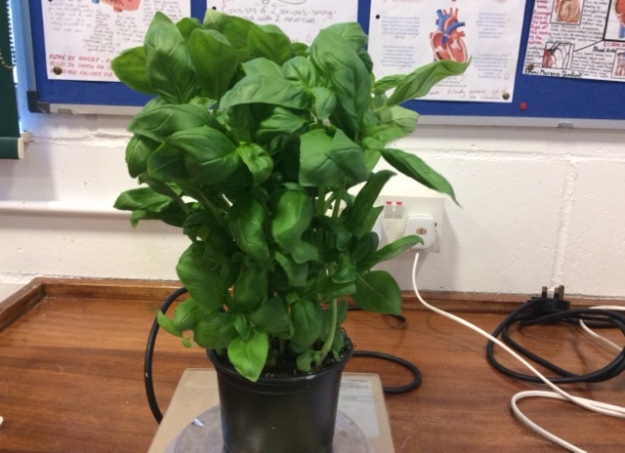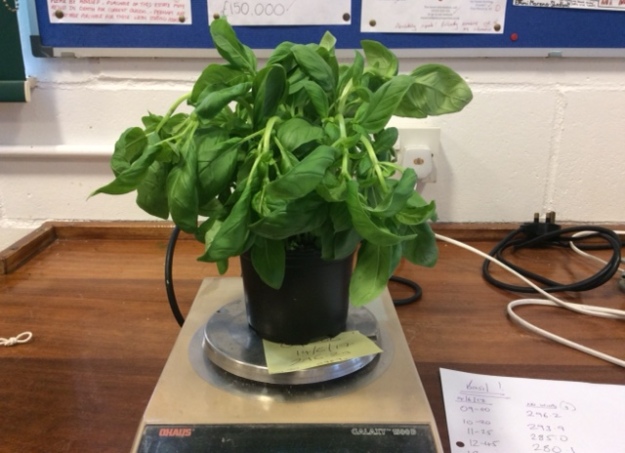Still on plant transport, I thought I’d backtrack a little and explain how I try to make the topic more memorable, accessible and comprehensible. One way is to look at parallels between plants and themselves and this next idea was prompted by the frequent misunderstanding that the function of stomata is to allow water to evaporate and pull water/minerals up to the leaves.
So I tell them the story of Joe Simpson and Touching The Void.
If you haven’t read this book, I’d really recommend it, though – spoiler alert! – I’m going to retell it now, as I tell it to my Year 9s/10s. But this is obviously a very abridged version, probably full of errors, and for the full effect you really need to go to the original source.
So, in 1985, a young British climber called Joe Simpson went to Peru with his friend Simon Yates to climb the west face of Siula Grande, an unclimbed route in the Peruvian Andes. It was a very remote mountain and 6356m high. They had to hike, with donkeys, for a week just to reach the place where they would camp. They then spent a week acclimatising and practising, before setting off for the climb.
They took lots of equipment – ice axes, crampons, sleeping bags, ropes, other climbing gear, instant food, a stove and some gas cannisters.
I ask the students why the importance of a stove and gas, and then discuss the need to melt ice both for cooking and drinking. Climbing at altitude, using lots of energy, breathing thin air, you dehydrate very quickly, as water evaporates from your lungs. I get them to breathe on a mirror to remind them of condensation. The whole disaster that followed, I say, was because they didn’t take enough fuel…
This intrigues them, captures their imagination and their curiosity.
I sketch Siula Grande on the board. I describe the challenges of climbing up a 1500m wall of near vertical ice. I tell them how the first day of climbing, after trekking over 6 miles of rocky ground and glacier to get to the base of the mountain, went well, and how they found a sheltered snow hole to spend the night, melting ice to make tea and a supper.
The next day was harder as they ran into the meringue like flutings and cornices that form on Andean peaks. Fragile, unstable, nerve wracking to climb on. They floundered for hours, trying to force a way to the peak that was only just above them, but ended up having to spend another night on the mountain. They were behind schedule, and running out of fuel.
The next day, exhausted and scared, they summited, but now the weather, which had been glorious, was closing in. A storm on top of a mountain was not a great prospect, so they floundered along the ridge, not sure if they were on the mountain or a fragile overhanging meringue of snow and ice. The storm forced them to spend a 3rd night on the mountain, and, making breakfast the next morning, the gas ran out. They would have no more water until they got to the lakes back at their campsite…
The next day, in terrible weather, no visibility, struggling along the ridge, Joe fell and shattered his leg. The only pain killer they had was paracetemol. He should have died. Nobody breaks a leg on top of a remote mountain and survives. But, instead, Simon lowers him, on a rope, down the side of the mountain, 30 meters at a time. While he is lowering Joe, Simon makes a little snow seat to take the weight. When the rope runs out, Joe does the same while Simon climbs down. Over and over again, down this massive face.
They’re nearly there, they nearly make it…
But they can’t communicate. The storm means they can’t see each other or hear each other. And near the bottom of the mountain, Simon gets to the end of the rope and Joe has not taken his weight. Reason being, Joe has been lowered off the edge of a cliff and is danging in mid-air. I sketch this on the board for effect. And then explain how Joe’s weight is slowly pulling Simon out of his snow seat… At the last second, Simon remembers his Swiss army knife, grabs it out of his pack and… cuts the rope.
Pause for effect. There is always a gasp, a moment of shock.
Simon, battered and exhausted, builds a snow hole and collapses into it to shelter from the storm. The next day, he wakes to glorious weather, perfect visibility, and he is able to safely climb down and walk back to camp. On the way down he sees the gaping crevasse in the glacier that Joe has fallen into and is torn apart by the thought that he has killed his friend.
Except that Joe is not dead. He’s landed on a little ledge. He pulls the rope down and see the cut end. He knows what Simon has done. Looking around, he knows that he can’t possibly climb out of the crevasse. He also slowly realises that he doesn’t want to just sit there and wait to die, so he fixes an ice screw into the wall and slowly lowers himself into the void…. he has decided that if he reaches nothing by the end of the rope, he will just let go.
So he lowers himself. At the end of the rope he’s still in hanging free, so he lets go… and falls a few centimeters onto a flat surface. A flat surface that slopes away and up to the top of the crevasse. He has an escape route!
And so Joe slowly crawls out of the crevasse. And with a broken leg, crawls out of the glacier and along rocky ground, the 6 miles back to camp. He does, at one point, find some water, and drinks and drinks and drinks, feeling his strength returning (though he has lost many kilos in mass, he is so dehydrated). Even so, he only realises he is back in the camp when a horrible stench alerts him to the fact that he’s just crawled into their latrine….
Simon after several days of mourning his friend, had decided to leave the next morning. He had burned all Joe’s clothes. They have to get back to Lima – which takes several days – and then he has to lie in a hospital, untreated, until the insurance confirms it will pay.
It’s an amazing story of courage and endurance and survival. But it almost certainly wouldn’t have happened if they had just packed another couple of gas cartridges…
…for if they’d taken enough fuel, they could have sheltered on top of the mountain until the storm had passed, and made a much more controlled, safer descent, rested and hydrated. But with no water, they had to get off the mountain as quickly as possible….
Still with me?
If nothing else, it reveals the power of stories. In the next lesson they can recall every detail – the names, the sequence of events, the country, the meringue cornices, even the mountain. And they remember why it all went horribly wrong. Which is when we finally get round to talking about stomata…
Because stomata are the plant equivalent of your nose and mouth, they allow their owner to breathe, so they can carry out vital gas exchange. Trouble is, gas exchange surfaces like alveoli or spongy mesophyll are moist, and water will evaporate into the air spaces and escape. You don’t have a nose in order to exhale water and dehydrate, it’s just an inevitable consequence of needing oxygen. Same with a leaf – the water loss is a necessary evil. Sure, you can stop it – but is it a good idea to stop breathing?
Looking at rates of transpiration under different conditions, explaining guard cell movement, now has an immediate, relevant and identifiable context.

